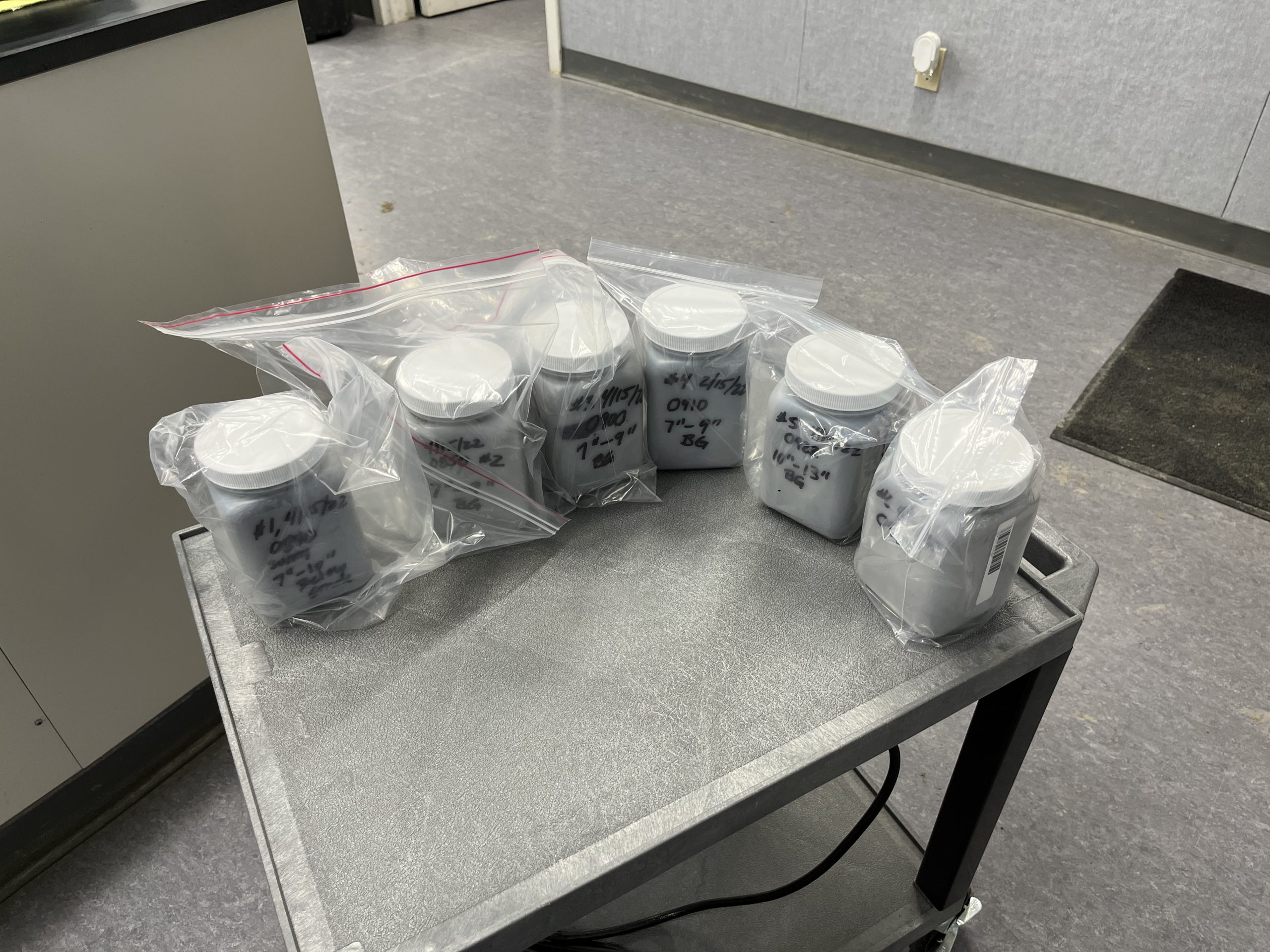
Samples from various agencies are prepped in the lab.
View CWEA’s PFAS resources page, support by Carollo.
Three San Francisco Bay Area wastewater agencies are participating in an EPA-funded national research program looking at the prioritization, fate, and transport of unregulated organic chemicals (UOCs) in the environment resulting from land application of biosolids.
The three agencies, including the Las Gallinas Valley Sanitary District in San Rafael, the City of Santa Rosa, and the Vallejo Flood and Wastewater District in Vallejo, are serving as just one set of test sites. Other program sites are located in various areas around the U.S. The Bay Area testing started about six months ago (Summer 2022) under the principal investigator, Dr. Linda Lee, of Purdue University.
“The land application of biosolids offers multiple benefits over landfilling and incineration, and improves soil health and plant nutrition,” Lee said. “However, biosolids contain numerous unregulated organic chemicals leading to concerns that may impede the beneficial use of biosolids.”
She continued, “In particular, there are perceived risks from a potential accumulation of UOCs in food and feed crops, and potential offsite transport that could result in groundwater or surface water contamination.”
The Bay Area locations are essential to the research program because they apply biosolids in Bay lands where there is shallow groundwater.
Lee is part of a group of investigators who received a research grant from the EPA. The project is appropriately titled: “Unregulated Organic Chemicals in Biosolids: Prioritization, Fate and Risk Evaluation for Land Applications.”
While the current main concern of contaminants in biosolids is PFAS, there are upwards of 350,000 recorded UOCs that possibly pose risks to human health and the environment. About 2,000 new chemicals are introduced into the U.S. each year. However, the EPA has only regulated about 80 of these chemicals, and just over 100 chemicals considered a contaminant threat are currently under consideration.
Lee said it is also important to note that UOCs originate not only from industrial sites but also from households, where everyday living can deposit them.
It is important to note that greywater can leach into landfill groundwater via precipitation or surface runoff.
The Las Gallinas and Vallejo districts have influent similar in composition to the Santa Rosa region, with the three having very little industrial wastewater contribution and heavily residential service areas.
“We, too, have mostly domestic waste, independent breweries, and a landfill site,” said Jennifer Harrington, environmental services director for Vallejo Flood and Wastewater. “We also have the ship maintenance and repair facilities on Mare Island.”
Harrington said her district rotates the fields where biosolids are applied so that each has biosolids applied only once every five years.
Linda Lee’s research plan includes prioritizing UOCs in biosolids based on their occurrence, mobility, persistence, and bioaccumulation. The team is developing simple standard assays to measure mobile and bioavailable fractions of priority UOCs in biosolids. They also conduct field studies at multiple locations to evaluate plant and earthworm accumulation, leaching, and runoff risks of priority UOCs under different biosolids applications, soil, climate, and planting conditions.
The prioritization study will leverage existing data to identify a short list of UOCs that pose the most significant concern for offsite transport and bioaccumulation. With the development of standard assays, the research team aims to measure chemical forms available for offsite movement or bioaccumulation rapidly.
Mary Martis, from GHD Inc.’s U.S. West Biosolids and Organics Leader, is a consultant to the three agencies in Northern California and part of Dr. Lee’s research program team. She said that comparing the different test sites throughout the country will be very important to the project.
Using prior work performed in Arizona looking at sites where biosolids had been land applied for decades as an example, Martis explained that “the research in the Bay lands is very significant because we cannot necessarily take the body of research done in Arizona and apply it to California.” One difference between the two regions is that the groundwater elevations in Arizona are deeper than in the Bay lands being studied.
“We can determine under what conditions land application is not a concern and how we can manage them better,” Lee said.
Curtis Paxton, general manager at Las Gallinas, said his district has historically disposed of its biosolids on a small parcel of land it owns. The agency has recently moved to a beneficial use strategy for the material. The plan will be to apply at various rates on several hundred acres of district-owned land as a fertilizer and soil amendment for agriculture.
“Working on this study will give us a good baseline to work from and what issues we will have to face, or not have to face, moving forward,” he said.
This UOC program is in the first year of a three-year grant program. Lee said the study is currently targeting a list that includes about 200 non-PFAS UOCs as well as about 70 known to contain PFAS.
“We consider what is actually present, UOCs that from a risk assessment perspective have the potential to be persistent, to be mobile, and potentially cause adverse health effects, and UOCs where data gaps exist,” she said.